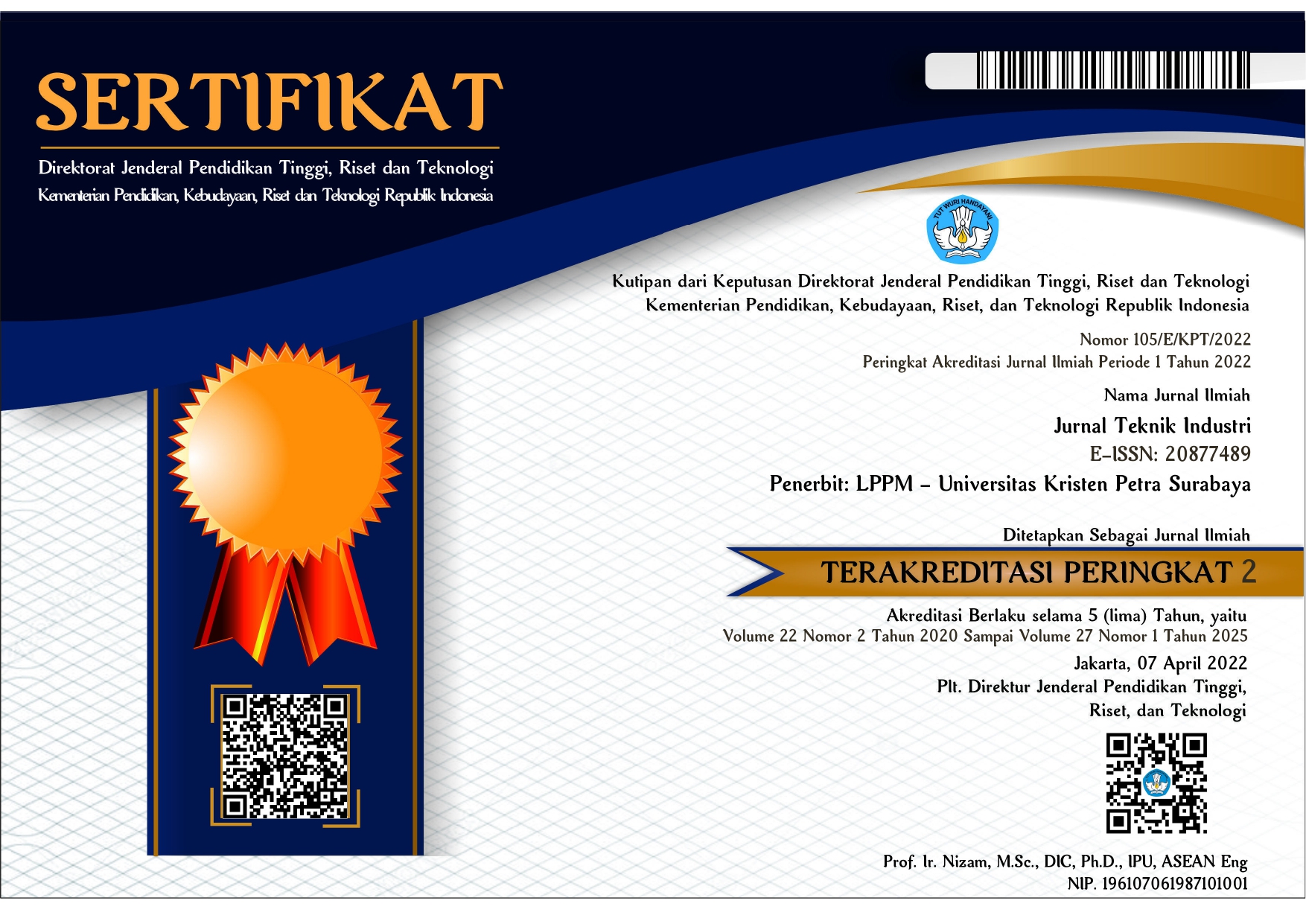Pengukuran Tingkat Eko-efisiensi Menggunakan Life Cycle Assessment untuk Menciptakan Sustainable Production di Usaha Kecil Menengah Batik
DOI:
https://doi.org/10.9744/jti.14.2.137-144Keywords:
Batik, dye chemicals, life cycle analysis, eco cost, eco efficiency.Abstract
Pekalongan is one of the batik cities in Central Java, many batik SMEs thrive in Pekalongan. Batik SMEs indicated a cause of environmental pollution that occurred in the city of Pekalongan. Pollution caused by the use of chemicals in the dyeing process. This study aims to measure the eco-costs and eco-efficiency rate of batik products, as well as looking for suggestions on improving eco-efficiency. Eco-efficiency rate is measured by using LCA (Life Cycle Assess-ment) doped with SimaPro software. This method is used to evaluate the environmental impacts arising from the use of the constituent materials. The results of the data processing show that the value of eco-costs for chemical dye batik is Rp 188,028.32, with eco-efficiency rate is 68.74%. Batik industries are not sustainable and affordable. Economizing of the resourcing and applying cleaner production can be accomplished to enhance the eco-efficiency rate. Cleaner production can be achieved using natural dyes and implement End of Life strategies.Downloads
Downloads
Published
How to Cite
Issue
Section
License
Articles published in the Jurnal Teknik Industri: Jurnal Keilmuan dan Aplikasi Teknik Industri will be Open-Access articles distributed under the terms and conditions of the Creative Commons Attribution License (CC BY).
![]()
This work is licensed under a Creative Commons Attribution License (CC BY).


















